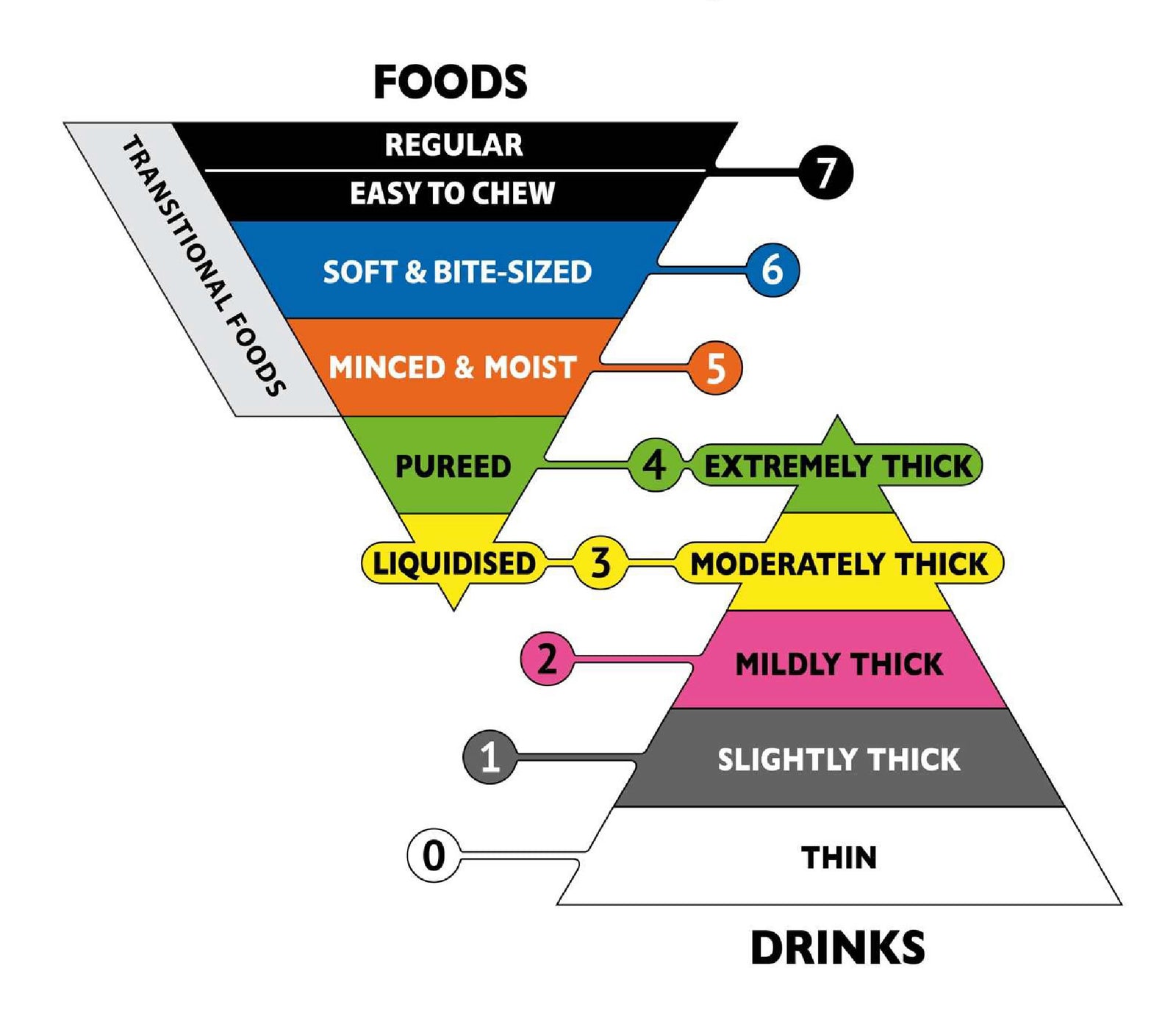The IDDSI framework consists of a continuum of 8 levels (0-7), where drinks are measured from Levels 0 – 4, while foods are measured from Levels 3 – 7.
The IDDSI Framework provides a common terminology to describe food textures and drink thickness. IDDSI tests are intended to confirm the flow or textural characteristics of a particular product at the time of testing.
Testing should be done on foods and drinks under the intended serving conditions (especially temperature).
The clinician has the responsibility to make recommendations for foods or drinks for a particular patient based on their comprehensive clinical assessment.
Three years of ongoing work by the International Dysphagia Diet Standardisation Committee came to fruition in November 2015 with the final IDDSI framework. The IDDSI Framework was updated in July 2019 with the addition of Level 7 Easy to Chew, a sub-level of Level 7 Regular as a result of international requests to classify everyday foods of soft, tender textures that are developmentally and age appropriate.
Our plan is for the framework to be translated into a number of languages as part of worldwide implementation. A review of existing standards, available evidence and collaborative efforts from stakeholder groups has resulted in a framework that aims to be culturally sensitive, measurable and applicable to individuals of all age groups in all care settings.
IDDSI recommends the following testing methods for texture modified foods:
Fork Drip Test
The Fork Drip Test is used to check the correct thickness and cohesiveness in Levels 3-5 foods by assessing whether they flow through or how they hold together on the slots/prongs of a fork and comparing against the detailed descriptions of each level.
Spoon Tilt Test
The spoon tilt test is used to determine the stickiness of foods (adhesiveness) and the ability of the food to hold together (cohesiveness).
Fork Pressure Test and Spoon Pressure Test
To check how firm or hard a food is, a Fork Pressure Test is best used to assess foods in Levels 4-7EC and transitional foods by assessing how the food changes when pressure is applied to the food with the tines/prongs of a fork or the back of a spoon. The slots/gaps between the tines/prongs of a standard metal fork typically measure 4 mm, which provides a useful measuring tool for particle size of foods at Level 5 – Minced & Moist.
Important: Please note that the size differs for young children. Refer to the Complete IDDSI Framework and Detailed Definitions.
Chopstick Test
If forks are not available, chopsticks can be used to pick up and break apart food to determine its characteristics and behaviour.
Finger Test
Finger tests have been incorporated in recognition that this may be the most accessible method in some countries.

